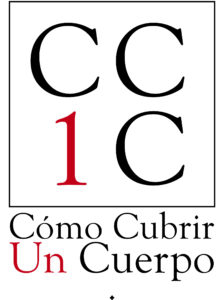Originally published on February 2, 2013

Presentation of the project “Cómo cubrir un cuerpo”
technical fashion training
A platform for responsible fashion
Cómo cubrir un cuerpo (How to Cover a Body) is a platform for discussion and information on techniques and processes in fashion creation.
The idea for this blog arose after noticing the widespread lack of information among students in some fashion schools regarding creation techniques.
Its aim is to share useful knowledge for the professional and personal development of people who want to work in or are already working in the fashion world.
Current situation in schools
I was surprised to find that students who can barely draft a basic pattern and make a few simple alterations already call themselves designers—even when studying in schools that only teach patternmaking.
Many of them are unable, even after graduating, to industrialize a pattern for production if their “collection” is retail fashion, or if it is dressmaking, they do not even know how to correctly open a bust dart on a fitted garment using a sleeve board.
I am not saying that schools or students are not valid, but I do see that there is a problem.
It is very likely that many of the diplomas awarded are not enough to sustain a professional path in fashion, and students are not aware of it.
The need for comprehensive training
To enter the fashion world seriously the fashion world, a much broader and more open vision is required. By this, I mean mastering the entire process: from conception, design, creation, and assembly to the final pressing of the garment.
Only a deep technical understanding of the entire production process can give true creative freedom.
I know of students attending prestigious and expensive schools who spend more than a year copying scaled drafting templates of a basic blouse—doing alterations that any sewing machinist in a workshop could do blindfolded and explain better than the teacher explains.
When they ask the teacher about the drafting they are copying, the answer is “Just copy it for now; you’ll understand later.” That “later,” after many costly tuition payments, never arrives.
Others, in public schools, have excellent teachers who tell them: “There are two ways to learn how to make patterns: either by doing it yourself, or more practically, by buying the ‘B…’ (a well-known fashion magazine).”
Illusion and reality
Students in all these schools—public or private, fancy or modest—have two things in common:
- A lack of understanding of the full fashion creation process
- They expect some software, operated by others, to fix all their knowledge gaps
After finishing their studies, they proclaim themselves full-fledged designers and speak of their collections with much less humility than the great fashion creators did in their time: lots of flair, glamour, and emptiness—flash in the pan.
The most delicate phase: technical realization
This lack of information leads to a lack of humility and disregard for the technical phases of creation—aside from drawing, if that is even present.
The materialization of an idea (pattern drafting, grading, and prototype construction) is the most delicate phase in fashion design.
The best idea, even beautifully illustrated, can be a total failure if poorly executed.
A fashion creator’s job must go as far as the final pressing of the prototype—and, in the case of a prêt-à-porter collection, to the fitting of all sizes—meaning they must also master the grading process.
The value of technique and knowledge
Today’s students, if properly motivated, are truly brilliant. Their imagination is a volcano in eruption that sometimes needs channeling.
It is a shame they cannot enjoy the full creative freedom that comes with deep knowledge of all creation techniques, as well as an understanding of fashion history and its inner logic.
If students today received complete training, we would see the rise of genuine international fashion creators once again.
Many young designers last no more than a few seasons before they begin to decline and disappear from the fashion scene: they lack creative self-renewal.
The great mystery of the Phoenix in fashion is called foundational knowledge: this is the ash that allows the creator to rise again and again after every act of creation without losing their identity.
An invitation to awareness
Let’s remember the quote attributed to Abraham Lincoln:
“You can fool all the people some of the time, and some of the people all the time,
but you cannot fool all the people all the time.”
In real life, clients stop buying if they’re not convinced.
Repetition and lack of creativity in fashion is deception—and deception is not forgiven.
Cómo cubrir un cuerpo aims to help lift the veil for those who feel blinded. We hope it can fulfill its purpose.
Indiscreet questions…
Why don’t we ask ourselves why fashion in Spain—particularly in Barcelona—no longer works?
What will happen when the generational shift, which is bound to come, finally arrives?
Oh right… I almost forgot: there are computers and pattern magazines for artisanal work… (Using a tracing wheel is artisanal, isn’t it? The computer doesn’t do that, does it?).
